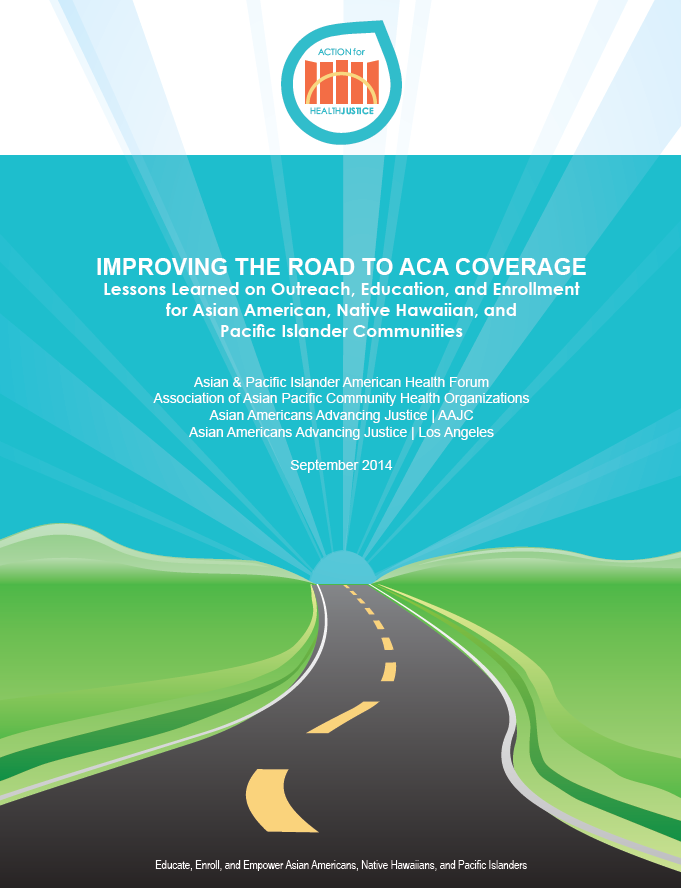The opening of the health insurance exchanges and the expansion of the Medicaid programs under the Patient Protection and Affordable Care Act (ACA) provided opportunities for millions of Americans to gain health insurance coverage. Still, many Asian Americans, Native Hawaiians, and Pacific Islanders (AAs and NHPIs) faced major barriers and challenges during the first Open Enrollment Period from October 2013 to March 2014. Because AAs and NHPIs represent a diverse group with many different languages and cultures, these populations faced unique challenges related to language, immigration status, and health literacy at they attempted to enroll in coverage.
This report provides a comprehensive narrative on the activities of Action for Health Justice (AHJ) – a collaborative of over 70 community-based organizations and Federally Qualified Health Centers working in 22 states to address the challenges in ACA outreach, education, and enrollment facing AA and NHPI communities across the country. These organizations engaged in a multitude of strategies to help AAs and NHPIs enroll in coverage, from creating educational materials to help limited English proficient (LEP) consumers understand insurance concepts,
to working one-on-one with families for hours and over multiple visits to help them understand application forms and submit documentation. AHJ partner organizations also created strategic partnerships with businesses, faith-based organizations such as churches, temples, and mosques, and ethnic media to educate AA and NHPI consumers about the benefits of the ACA and dispel many myths circulating among communities.
The report presents examples, stories, best practices, and lessons learned from AHJ partner organizations on how they worked and connected with communities. Many organizations were already trusted sources of health information in their communities before the ACA was passed, and built on these relationships to engage with consumers about the ACA. As a result, they were able to improve enrollment efficiency for LEP and immigrant consumers. The presence of AHJ also allowed for rapid communication between organizations about new developments and changes in policies or procedures. Four AHJ national organizations served as important intermediaries to relay challenges directly from the field to appropriate state and federal officials.
While much was accomplished during the first Open Enrollment Period, many enrollment barriers remain for AA and NHPI communities. Federal and state policy changes can help improve the enrollment experience for AAs and NHPIs and other hard-to-reach populations so they can continue to enroll in coverage. AHJ will continue its work and hopes that others can utilize the experiences and strategies shared in this report to help improve the health of all communities.

